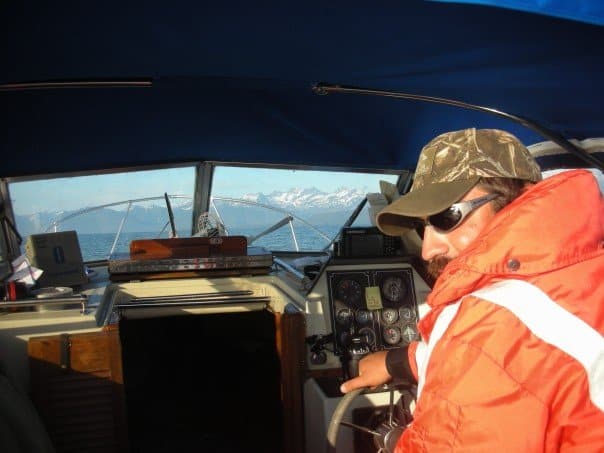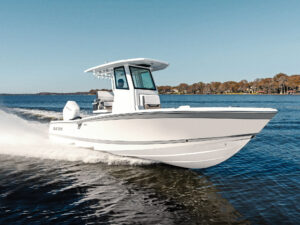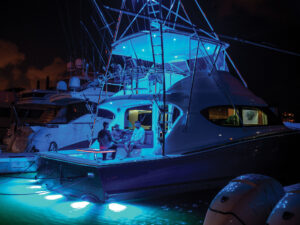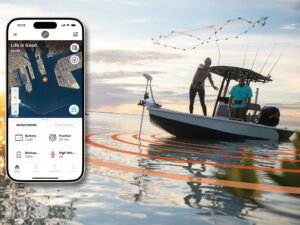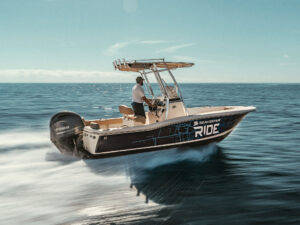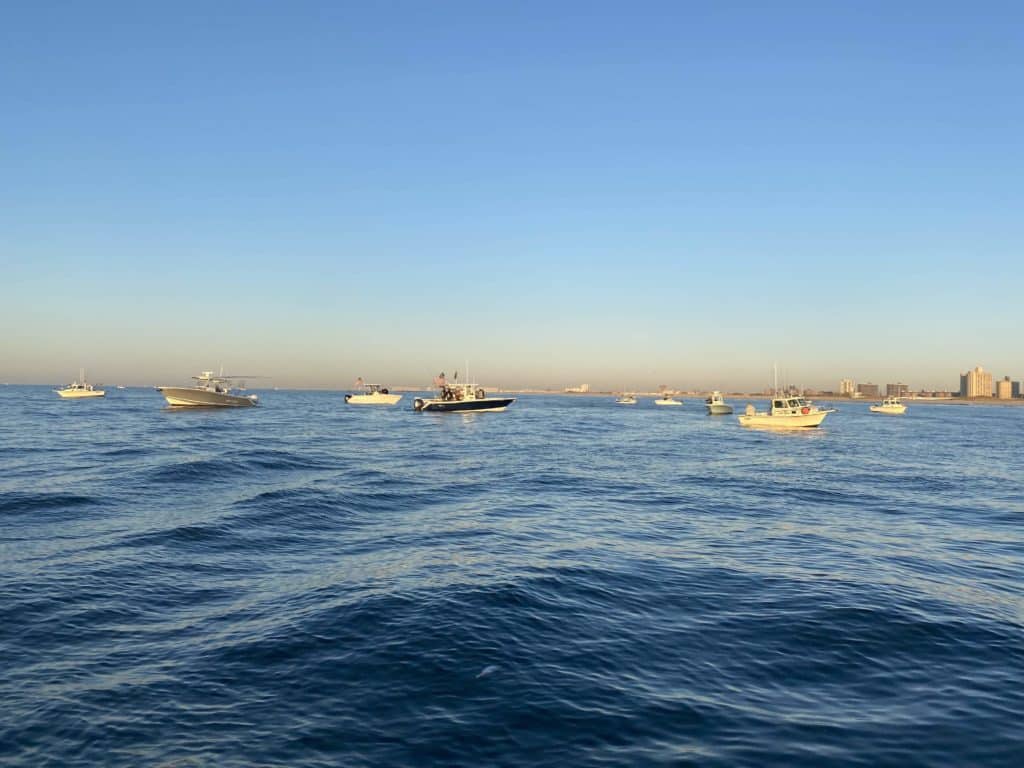
When I first encountered them, I thought they were bunker. They weren’t. The mass of striped bass stretched for a quarter mile or more to my north and was almost as wide, clearly visible in the flat-calm seas. I quickly deposited a popper on the edge of the school, and a dozen fish broke off in pursuit.
Earlier That Morning
I had left my slip before the first twinges of civil twilight painted the sky, long before the gas dock opened. I wanted to beat the fleet out, as word of the bite had circulated far and wide. My Maritime Skiff had two-thirds of a tank left, which was more than enough to reach the bunker schools just outside the inlet and make it back to my berth after.
But the dogfish were also on the menhaden, making it all but impossible to get a bait to the bass below. And I quickly grew tired of the fleet that that had grown around me with the rising sun. I ran a few miles west to look for more receptive bass when I encountered the motherlode of feeding fish in 25 feet of water.
My boatmate and I played catch and release with striped bass in the 35- to 45-inch range on spinning rods and poppers for about an hour before the bent pole radars went off and the hordes descended upon us. The boat traffic pushed the bass around, and it became a run-and-gun fishery. To stay on the bite, I kept moving farther and farther west, a short rip at a time for another few hours.
All told, I ended up making a 50-mile round trip that morning; no small feat for an 18-foot center console wearing a 90-horse outboard. I stopped at the pump on the way in, knowing I must have blown through my fuel reserves. But when I cracked the tank it was emptier than I could have ever imagined, and the 26-gallon tank took almost 24 gallons to fill.
Rule of Thirds
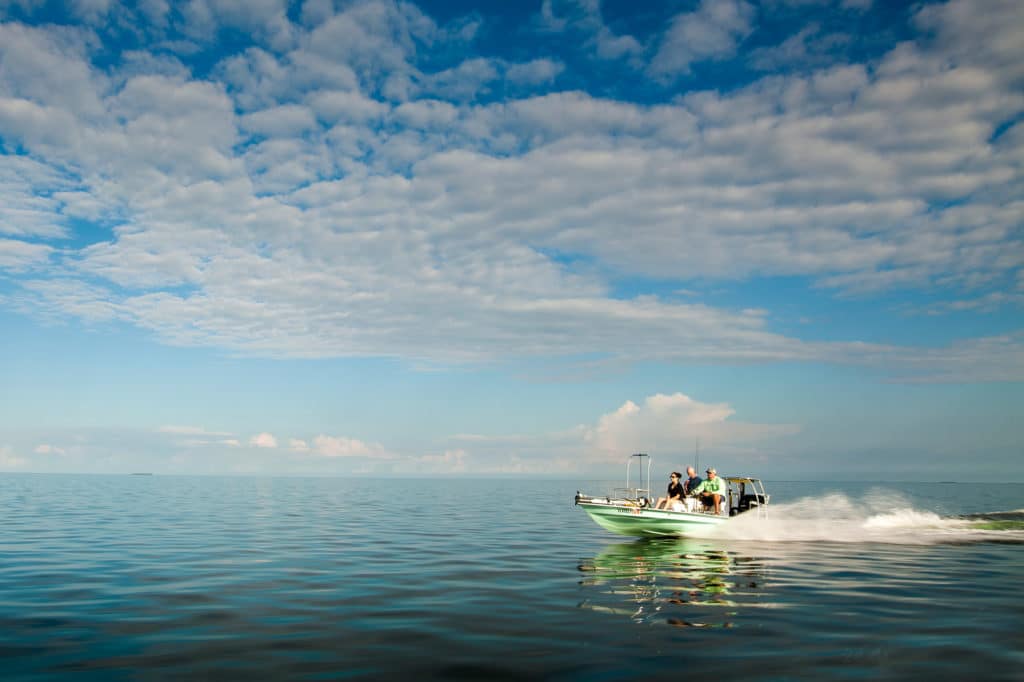
I should have known better than to run the tank that dry. In a previous career I was a Department of the Interior-certified motorboat operator, and later, motorboat operation instructor. The summer I spent working for the Fish & Wildlife Service monitoring a seabird colony and conducting the Prince William Sound summer survey taught me the importance of rationing fuel. You tend to be more conservative with the throttle when you have to hand-crank your tanks full from 55-gallon drums stashed on a shoreline somewhere, and a tow is a day or two away.
To always ensure you have enough fuel, you need to follow the rule of thirds. That is, you should allot one-third of your boat’s fuel to the ride out, one-third to getting back, and one-third should be kept in reserve for any unplanned emergencies. Maintaining that reserve has paid off in a big way for me on more than one occasion. For example, giving me enough power to keep a 25-foot Whaler shiny side up, powering through Valdez Arm when the wind went northeast at 50 mph. All I could do was climb over the breakers as carefully as possible as I made my way to port.
Know Your Boat
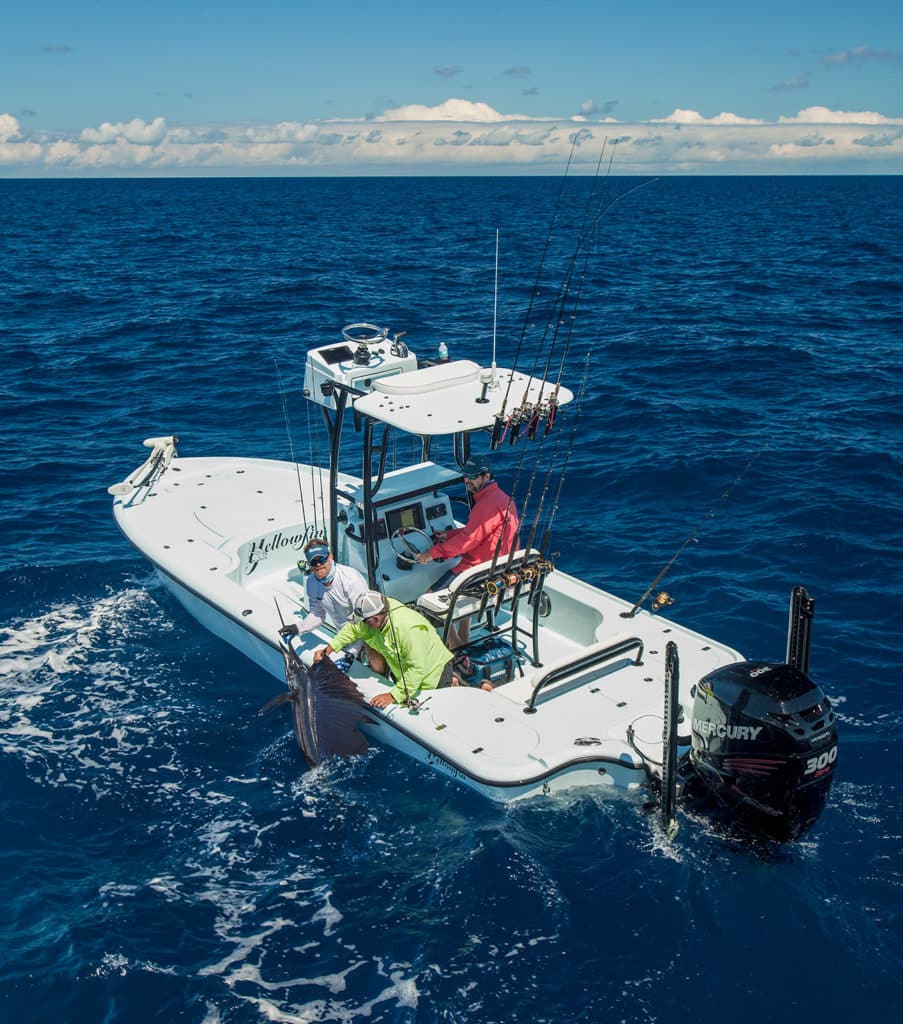
For this rule to work, you need to understand your boat’s range, which is determined by its fuel economy and size of its gas tank. Boats tend to have a sweet spot where they operate most efficiently, but move the throttles past that and they burn fuel almost exponentially. You’ll need to figure out what the ideal RPM range is for your vessel and stick to it for the best mileage and greatest range.
But going fast is fun, and we tend to push our boats beyond their peak economy in pursuit of fish or thrills. (How often have you said, ‘I wish I spent less time fishing!’ after returning to the dock?) The best way to understand how much fuel your boat goes through is to document consumption through a wide variety of real-world conditions, and keep those in mind while you’re out.
Keeping an eye on the fuel gauge is also a good idea, but they are not the most reliable. I’ve had a few floats stick on me, giving the impression that the tank had more gas than it actually did. Fortunately, in those instances, I understood that vessel’s fuel consumption habits well enough to know that gauge was lying to me. And depending on the vessel, they can give false readings based on the boat’s attitude. Don’t ever trust a gauge, and don’t hesitate to look into the tank if possible.
Plan for All Contingencies
Once you have a handle on fuel consumption, you can safely plan trips. If you know your boat can typically travel 75 miles between fill-ups, you can safely reach fishing grounds 25 miles away. Though it might be tempting to push these boundaries, doing so can be dangerous. If the weather shifts and you need to be more heavy-handed with the throttle, you’ll be glad you had the reserves.
Whenever you leave the dock, know the alternative ports that you can turn to for fuel should the need arise along or near your planned route. Travel with a full tank, and top it off whenever possible. And being a member of a tow service, such as BoatUS or Sea Tow, is also a great idea.
An Ounce of Prevention
Running out of gas can lead to an embarrassing tow under the best of conditions. If the weather turns, or there’s a medical emergency onboard, it can create a life-threatening situation. Always ensure you have enough extra fuel should the unthinkable happen.
